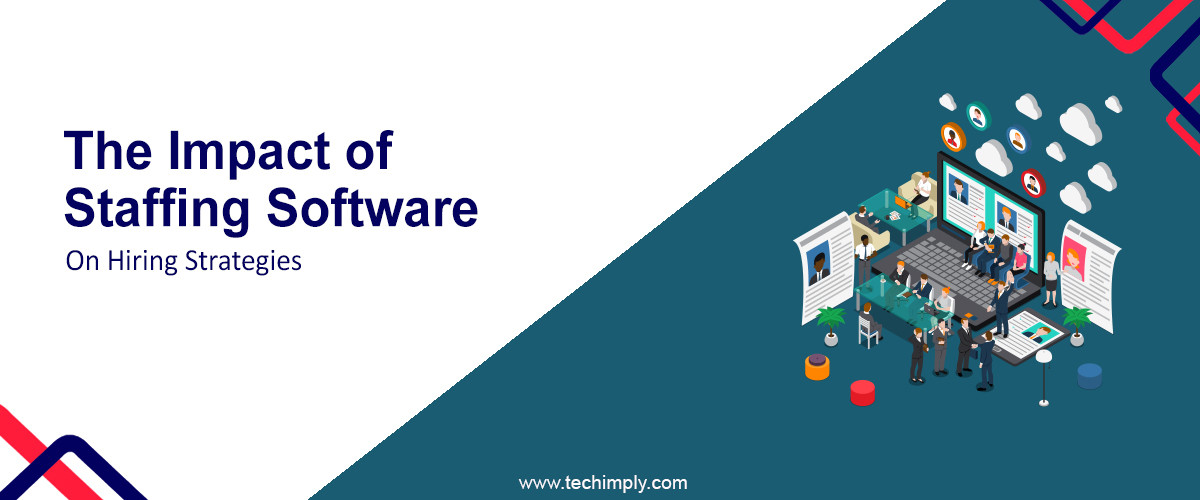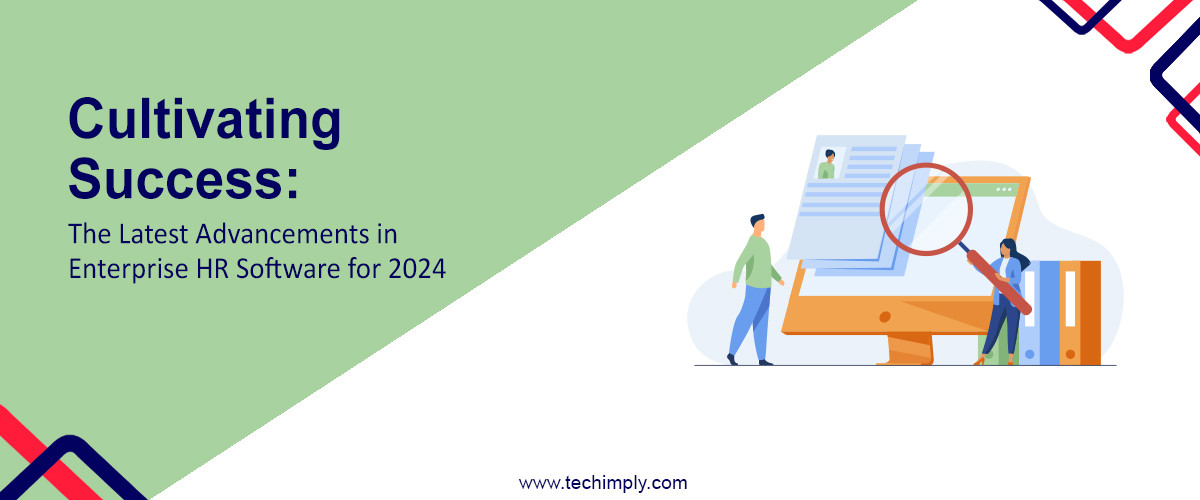The appropriate employees may make all the difference between success and stagnation in a fast-paced, cutthroat labour market. The incorporation of technological advancements that promise to optimise procedures, lessen human bias, and increase the general effectiveness of talent acquisition has caused a significant evolution in hiring practices in recent years. Staffing software is one such ground-breaking invention that is revolutionising the way businesses view and carry out their employment processes. It is a powerful instrument.
Staffing software is a non-negotiable asset in the Indian industry because of the fast-paced recruiting procedure and the country's growing labour force. When used effectively, the many advantages that this software offers can result in considerable competitive advantages. This in-depth examination of staffing software will highlight its complex effects on the dynamics of hiring, the kinds of changes it's bringing about inside companies, and the competitive advantage it provides in the talent acquisition process.
Understanding Of Staffing Software
It's critical to comprehend staffing software's definition and contents before analysing its implications. At its foundation, staffing software is a platform that streamlines the hiring process by automating tasks like posting jobs, finding candidates, and employee onboarding software. More sophisticated versions may incorporate capabilities like video interviews, artificial intelligence (AI)-powered applicant screening, and analytics tools that offer insights on hiring performance.
The goal of this programme is to make recruiting professionals' work easier and reduce the administrative load on HR departments. Organisations may use this technology to enhance HR operations in all areas, which will boost productivity, save money, and—most importantly raise the calibre of hiring.
The Evolution and Impact of Staffing Software in Modern Hiring Practices
The desire for more efficient HR software in india was the driving force behind the creation of staffing software. In the past, hiring involved labor-intensive procedures including manual job listings, paper resumes, and drawn-out correspondence. Digital staffing software was created as a result of the rising obsolescence of the traditional employment process brought about by enterprises scaling.
The basic architecture of staffing software is a reaction to the growing demand for scalable and data-driven recruiting techniques, with its roots firmly set in eliminating workflow inefficiencies. In addition to modernising the hiring process, this shift to digital technologies has had a significant impact on hiring tactics, which are now designed for accuracy and effectiveness.
Why Do You Need Staffing Software?
Staffing software has emerged as a critical tool for companies looking to improve personnel management and expedite their hiring procedures. By automating the tracking and sorting of candidates, this technology makes the difficult work of screening through many applications easier and guarantees that only the most qualified prospects are taken into consideration. Moreover, it makes communication between hiring teams easier and more efficient, which makes talent management software for india more strategically planned. Companies may enhance their workforce in a competitive market by using staffing software to increase the quality of hiring, shorten the time it takes to acquire new employees, and minimise time to hire.
Staffing software, however, is useful for more than just hiring work. It also has a major impact on training, development, and employee onboarding, setting the stage for a competent and contented team. Staffing software lets managers keep track of performance, spot skill shortages, and offer specialised training since it can store and arrange personnel data. This encourages an environment where learning and growth are ongoing processes inside the company, which raises employee engagement and retention rates.
The Strategic Implications of Staffing Software in Indian Landscape
Staffing software is especially important in the Indian employment market because of the country's large talent pool and growing tech-savvy population. The strategic implications of staffing software are critical, ranging from enhancing the calibre of talent acquisition to optimising resource allocation.
-
Improved Prospective Experience
In an industry where professionals have the ability to select their employers, the candidate experience has emerged as a critical component of recruitment tactics. HR departments may create a smooth and customised recruiting process for applicants with the help of staffing software. A company's employer brand is enhanced and the chances of attracting top applicants are increased when it offers a more favourable candidate experience through automated communication, online application procedures, and faster employee scheduling software in india.
-
Streamlining the hiring process
The number of hiring outlets, such as job boards, social media, and professional networking platforms, has increased dramatically with the growth of digitization. The administration of these many channels is made easier by staffing software, which allows recruiters to publish positions across several sites with little effort. Additionally, it gives information into which channels provide the greatest prospects, enabling businesses to maximise their marketing plans for hiring.
-
Data-Informed Decision Making
HR managers may make well-informed judgements by using quantitative data provided by staffing software. Through the monitoring of crucial recruiting indicators such as time-to-hire, cost-per-hire, and candidate sources, companies may pinpoint any obstacles in the hiring procedure and optimise their workflow. Predicting labour shortages and preparing for future employment requests are two further uses for data-driven insights.
-
Simplified Cooperation
In a team-based hiring process, efficient teamwork is crucial. By offering a centralised platform where team members can access applicant information, exchange feedback, and manage responsibilities, staffing software fosters teamwork. This makes sure that everyone on the hiring team is on the same page and aiming for the same goal, which is essential for attracting top talent.
-
Flexibility and Scalability
The Indian business landscape necessitates agility and scalability, particularly for start-ups and small-to-medium companies (SMEs). The ability to adapt to shifting organisational needs, such as an unexpected spike in hiring demands or a need for downsizing, is provided by staffing software. These systems' scalability guarantees that hiring procedures may be increased or decreased without sacrificing effectiveness or quality.
Technology Integration in Staffing Software
The use of state-of-the-art technology enhances the possibilities of staffing software. The hiring process is being revolutionised by AI and machine learning, which is making it more intelligent and effective. Modern staffing software greatly lessens the workload for recruiting managers by automatically matching candidate profiles to job descriptions, predicting candidate success based on past data, and even conducting first AI-led interviews.
-
Artificial Intelligence and Machine Learning
The most cutting-edge workforce software solutions are powered by AI and machine learning algorithms. With the use of these technologies, intelligent candidate matching systems may be developed that match candidates based on a review of resumes, social media profiles, and job descriptions. Predictive analytics is further enhanced by machine learning, which reveals which applicants have the best chance of succeeding.
-
Video-Based Interviewing
Recruiters can screen prospects faster and more efficiently when they use video interviewing capabilities. Live or pre-recorded video interviews provide an insight into a candidate's communication style and demeanour, which may be a powerful predictor of cultural fit. Additionally, it makes it simpler to include several parties in the employment process without requiring that they be present in the same physical place.
-
Mobile Hiring
In a nation where smartphone usage is rapidly increasing and a large percentage of job searchers utilise mobile devices to look for possibilities, mobile recruitment is essential. By enabling prospects to apply for jobs and communicate with recruiters while on the go, staffing software with mobile-friendly features increases accessibility and reach.
Overcoming Challenges with Staffing Software
Staffing software has many benefits, but there are drawbacks to its application. Organisations must overcome obstacles such as the human aspect, reluctance to change, and the requirement for upskilling in order to fully utilise this technology. The shift from conventional recruitment marketing platforms to digital workforce solutions necessitates thorough preparation, efficient change management, and a training budget.
-
Management of Change
A key element of staffing software adoption success is change management. Hiring managers and HR departments might be averse to new technology since they are used to working in particular ways. Effective change management requires outlining the advantages, including important stakeholders in the decision-making process, and offering assistance and training.
-
Strengthening the Human Factor
The use of staffing tools shouldn't lessen the need of human judgement in the recruiting process. Even while technology may improve and automate many stages of recruiting, human judgement is frequently needed to make the ultimate hiring choice. Companies need to make sure that their HR departments have the resources and instruction needed to properly utilise staffing software.
-
Security and Privacy of Data
Data security and privacy are top priorities since staffing software processes a significant quantity of candidate data. To protect sensitive data, organisations need to set up data management procedures and invest in secure systems. It is imperative programming that data protection laws, including the General Data Protection Regulation (GDPR), be followed, particularly as the Indian legal landscape changes.
The Road Ahead for Staffing Software in India
Staffing software in the Indian industry has a clear future ahead of it. The capabilities of these platforms will only increase in sophistication as long as technology keeps advancing at a fast rate. Virtual reality may revolutionise various be used in the interviewing process, and machine learning will improve applicant matching algorithms and predictive analytics.
Businesses that make the most of staffing software will be the ones able to draw in and keep the top personnel as the labour market gets more competitive. In addition to changing employment procedures on an individual basis, the strategic use of technology will help firms adopt a more innovative, efficient, and agile culture.
Conclusion
staffing software has revolutionized hiring strategies, particularly for the burgeoning Techimply software listing platform in India. This cutting-edge technology streamlines the recruitment process, from candidate sourcing to final selection, enabling organizations to efficiently identify and onboard the most qualified professionals. By leveraging advanced algorithms and data analytics, staffing software reduces biases, enhances decision-making, and significantly cuts down hiring time and costs. The integration of such software into hiring strategies not only optimizes talent acquisition but also fosters a competitive edge for companies in the fast-paced SaaS sector. Thus, staffing software emerges as an invaluable asset for businesses aiming to thrive in the innovative landscape of the digital age.



.png)


